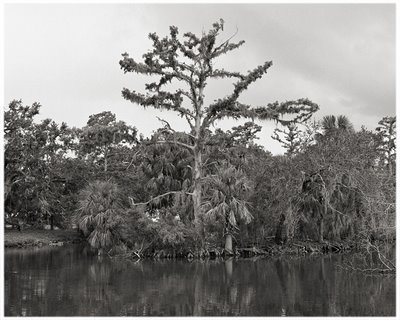While the move from 35mm photography to digital photography has not lost any speed, the move away from medium format film photography seems to be accelerating. As I mentioned in a previous post, Contax, Pentax,
Fuji, Mamiya, and Bronica have abandoned the medium format market, many years after Graflex, Kowa, Yashica, Minolta, and Koni Omega disappeared from the shelves. The demise of film cameras is naturally having an impact on the film manufacturers. I bought up 100 rolls of Verichrome pan when Kodak discontinued it. In retrospect, I should have accepted its fate and looked for a replacement. Not Agfa APX 100 (or 25, or 400), though, as Agfa film is now gone. And Ilford has been showing signs of sputtering out as well. Not to worry just yet, though. There are still film manufacturers in
Europe that may be around a bit longer. And fortunately for me these films seem to do well in my two favorite developers (at least at the moment), Panthermic 777 and PMK Pyro. I can still make do quite well with Ilford FP4+ in Verichrome pan’s place, and Rollei 25 in Agfa APX 25’s place. TRI-X should be around a bit longer, based solely on its popularity. But are there other 400 ISO choices? The most promising one to me is
Neopan 400.
I decided to try some Neopan 400 in PMK Pyro this week. PMK Pyro seems to work better with the older, more silver-rich films. But you can never predict results with pyro developers; sometimes it works beautifully with a 35mm film but doesn’t seem suited well at all for the 120 version of the same film. Fuji Neopan Acros 100 gave me very nice results with PMK Pyro, so it wasn’t a stretch to assume that the faster Neopan would give good results.

I shot a roll of Neopan 400 in medium format. I suppose I decided to give it every chance to succeed in the wake of having gotten pretty awful results with Agfa APX 400 in pyro. I developed it in the standard 1:2:100 dilution for 12 minutes at 68oF. That represents a good starting point for most films in PMK Pyro. The resulting negatives were thinner than I was expecting, giving me the impression that an E.I. of 200 might have been closer to the mark. The negatives were usable with some playing with curves, brightness, and contrast controls in Photoshop. Grain was very well suppressed.
This test shot in City Park responded well to the Photoshop tweaking, but I would rather have a negative that didn’t need so much tweaking. The first step would be to decrease the E.I. by a stop. Here’s the rub. I already get very nice results from Fomapan 200 Creative in PMK Pyro at the nominal 200 ISO, and Fomapan is cheaper. I don’t need another 200 film. So, this week, I’ll be trying Neopan 400 in 777. I think that will be a better match and may fill the 400 ISO film niche for me in medium format.

Photoshop can do some pretty amazing things with marginal negatives. Sometimes I worry that it will influence my technique. These negatives were marginal but salvagable. I can certainly do better.




<< Home